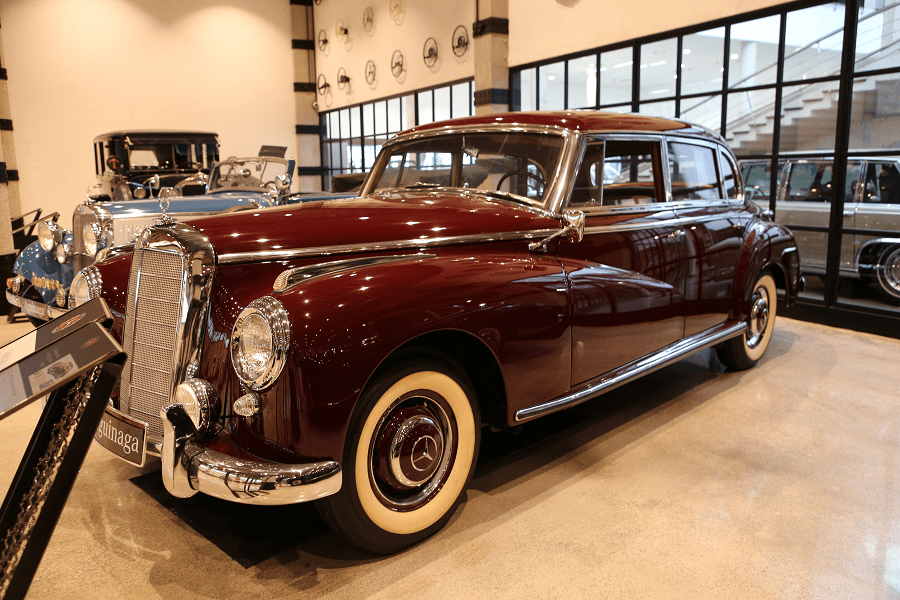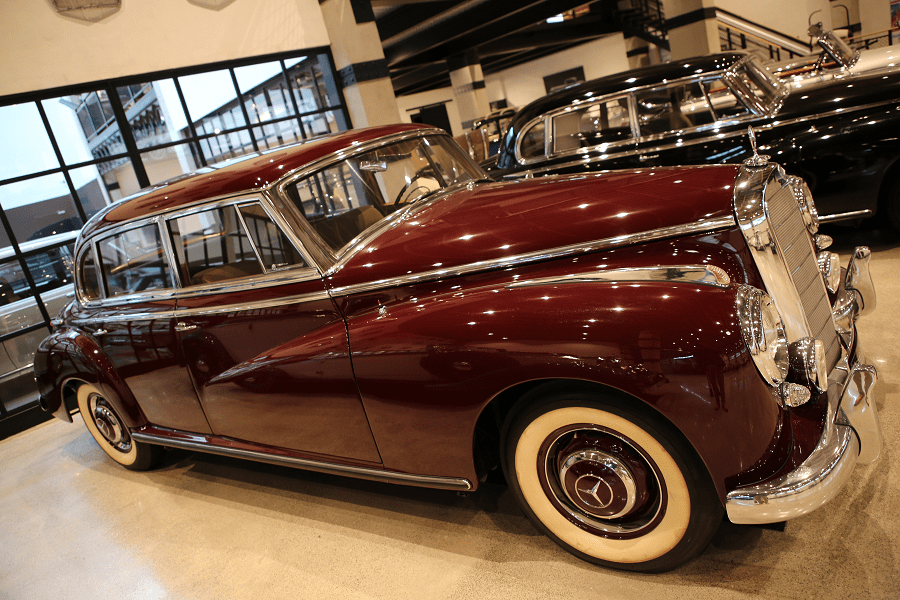Mercedes-Benz W186 Type 300 Sedan. Production: 1951-1955, sedan, engine: M186, six cylinders 2996 cc, 115 HP
The four door 300 (W186) was introduced at the Frankfurt Motor Show in April 1951 and entered series production in November 1951. It had no “a” designation, which was informally added, along with the “b” and “c”, by later enthusiasts seeking to distinguish the three W186 generations.
Available as both a saloon and cabriolet, it featured graceful modernist bodywork atop Mercedes’ proven X-frame chassis. An all new 3.0 L (2996 cc/182 in³) overhead cam, aluminum head M186 straight-6 was coupled to a 4-speed all-synchromesh manual gearbox. Twin downdraft Solex carburetors and an innovative diagonal head-to-block joint that allowed for oversized intake and exhaust valves produced 115 PS (85 kW; 113 hp) at a 6.4:1 compression ratio.
Designed to give reliable service under prolonged hard use, the engine featured deep water jackets, thermostatically controlled oil cooling, copper-lead bearings and a hardened crankshaft. With no natural cruising speed, the car could sustain anything up to its maximum speed all day, road conditions permitting.

The Mercedes-Benz W186 Model 300 was a four-door luxury sedan produced by Mercedes-Benz between 1951 and 1957. It was the company’s flagship model at the time, succeeding the World War II era W150. Three versions were produced in succession, known informally as the 300a (or simply 300), 300b, and 300c. An enlarged “300d” variant built on the W189 chassis succeeded it in late 1957.
Also referred to as a “Type 300”, the W186 was equal in features and price but superior in performance to the rival Rolls-Royce Silver Cloud and Bentley S1. Favored by statesmen and business leaders, it offered options such as a glass partition, VHF mobile telephone, and dictation machine.
The W186 is often identified as an Adenauer after Konrad Adenauer, the first Chancellor of the Federal Republic of Germany (West Germany), who employed six custom cabriolet, hardtop saloon, and landaulet versions of the W186 and its successor W189 during his 1949-1963 tenure. Among the custom features in these “parade cars” were writing desks, sirens, curtains, dividing partitions, sunroofs, and half-roof “landaulet” configurations.
Technologically advanced, the 300 was regarded as a “driver’s” car, sharing numerous design innovations and mechanical components with the iconic Mercedes-Benz 300 SL “Gullwing”, including engine, suspension, and chassis.












